Stoa
Stoa (Greek: στοά): long, free-standing, covered arcade, closed on one side, and with an open front and a roof supported by columns.
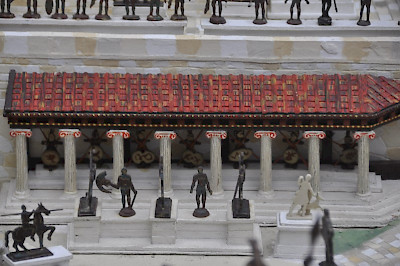
In ancient Greece, a stoa was a long, free-standing, covered arcade, closed on one side, and with an open front. The roof was supported by columns. Usually, stoas were built near a sanctuary or along a market square – in short, on all places where crowds gathered and people needed shelter from the sun.
The oldest known stoa stood near the temple of Hera in Samos and dates from the end of the seventh century BCE. The most famous stoa was the Painted Stoa (Stoa Poikile) on the Athenian agora, which was decorated with wall paintings commemorating a/o the battle of Marathon. This was the place where the philosopher Zeno of Kition taught his students, which have been called the Stoics ever since. Close to it was the two-storey Stoa of Attalus, which has been rebuilt and again dominates the Athenian agora.
The Stoa of Attalus, built in c.145 BCE by king Attalus II Philadelphus of Pergamon, is an example of a stoa that served as border of an architectonic space, which was quite common in the Hellenistic period. The Romans often put two stoas, which they called porticus, in front of each other to create a market square (forum).
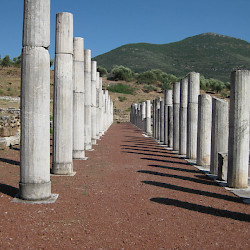 Messene, Stadion, Stoa |
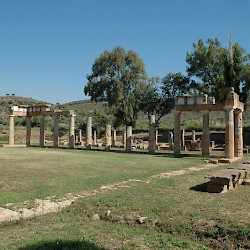 Brauron, Stoa |
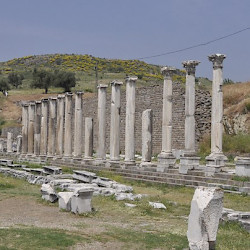 Pergamon, Asclepium, North Stoa |
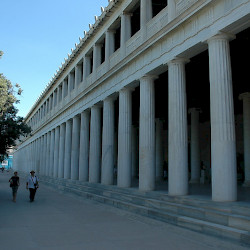 Athens, Agora, Stoa of Attalus II, Façade |